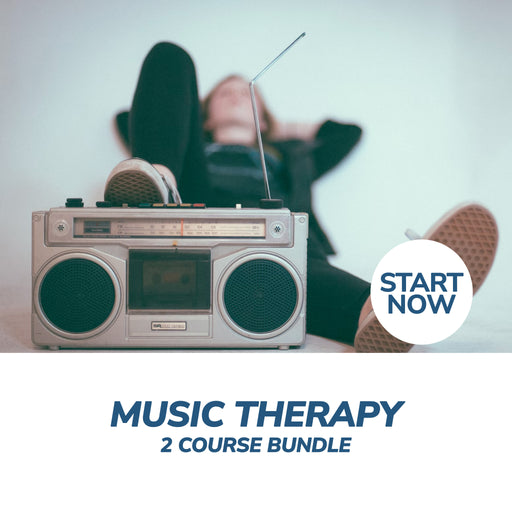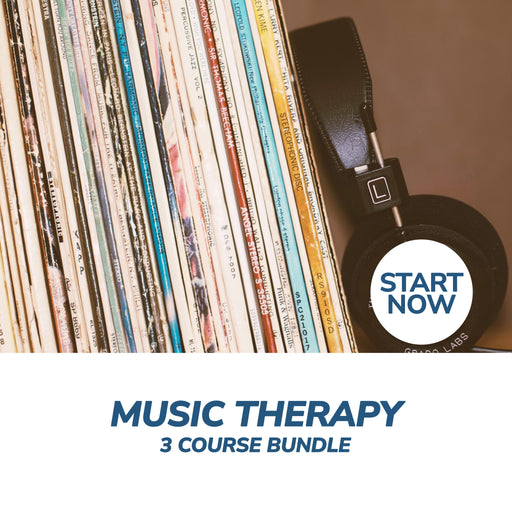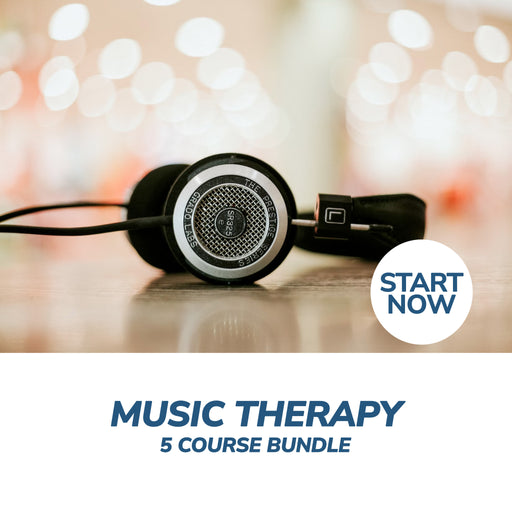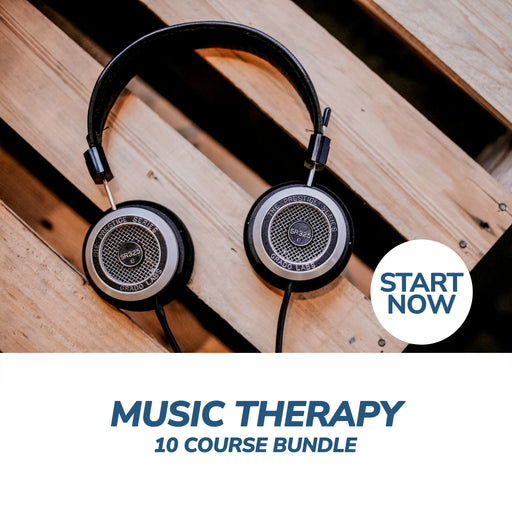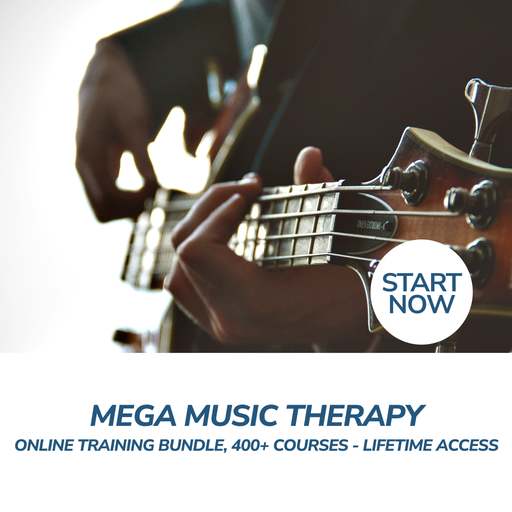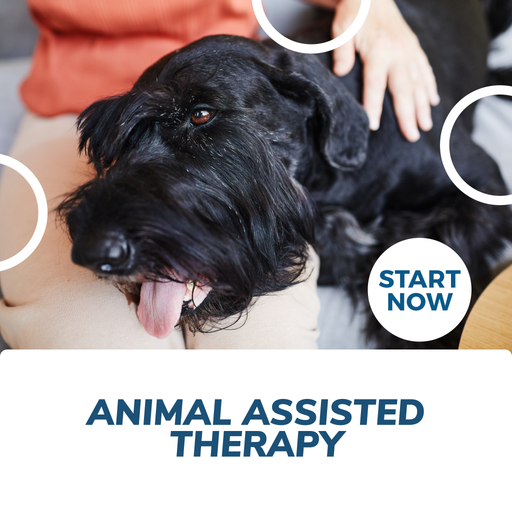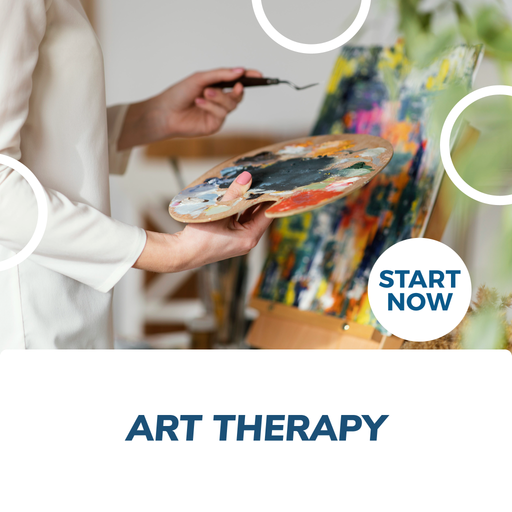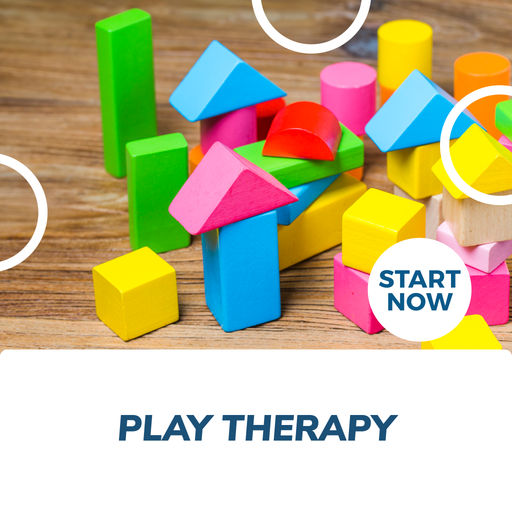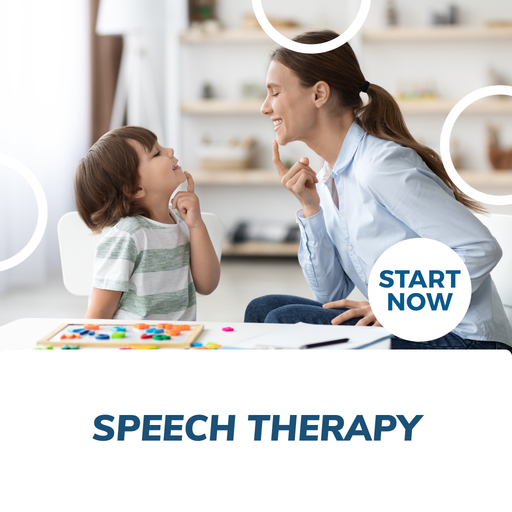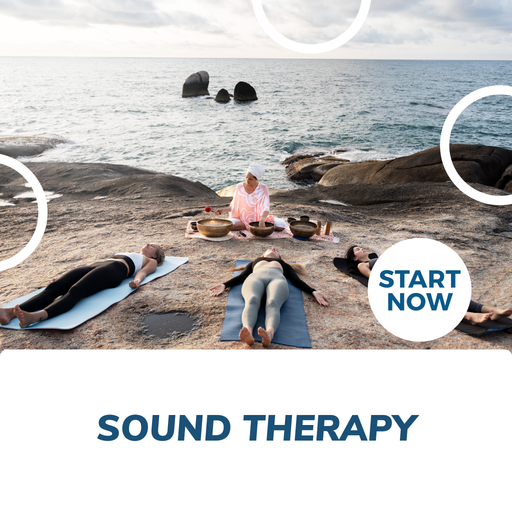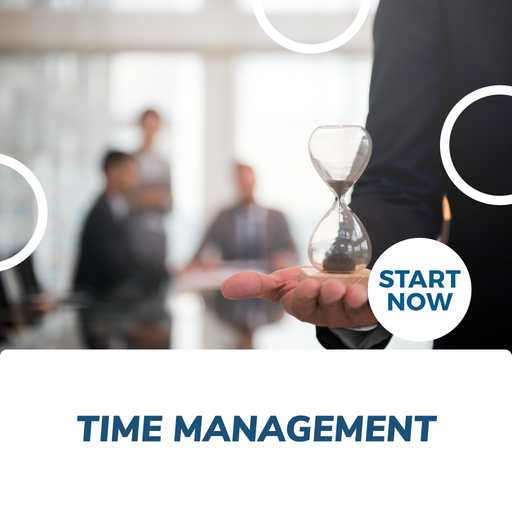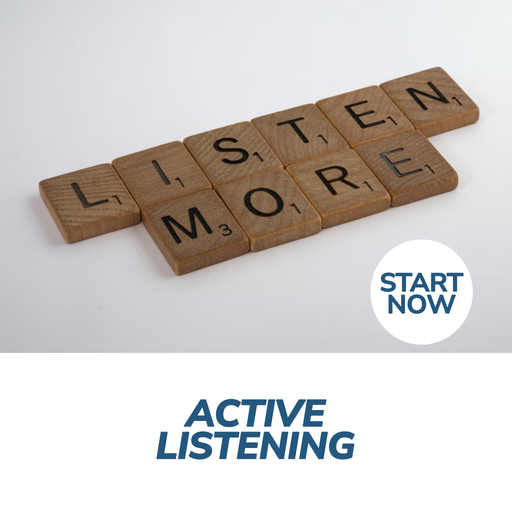
About This Course
Enjoy these Benefits and Discover How Music Therapy Helps Improve Mental and Physical Health!
|
|
Study Music Therapy Certification Online; Find a healthier and natural way of treating physical and other mental health-related conditions
In our Music Therapy Online Course, you will learn about the significant health advantages of music therapy and how you can help people suffering from physical and mental health conditions. If you are interested in becoming a music therapist, this certification course can help.
We begin our comprehensive online course by explaining everything about music therapy is and how this is performed. Also included in this music course is information on how to perform it and the people who will benefit from it. To give students a practical, first-hand experience, students will be guided through exercises that help them understand what it is like for clients undergoing music therapy.
When students enroll in this Online Music Therapy Course, they will be guided through the different aspects of music therapy and strategies that people in the profession take. Using various techniques will demonstrate the breadth of what music therapy can treat, depending on the person being treated.
Why you will benefit from this course
Music therapy is a powerful therapeutic tool that has been used for centuries to promote physical, emotional, and mental health. It involves using music to enhance the healing process and create a positive impact on individuals who seek treatment. Courses for Success offers a fantastic music therapy course for all students.
Once enrolled, students will learn about the different approaches to therapy, its effects on the human body and how it interacts with mental health issues. They will also gain insights about sound healing, sound therapy and other related topics such as positive psychology and play therapy. Students will acquire practical skills in completing therapy plans as well as having knowledge about commercial music production and songwriting for personal development needs or even for professional settings such as gaining employment within the industry or creating original compositions or tracks for record labels.
Course material may vary, but core topics may include an introduction to music theory, history of music therapy and degree details corresponding with respective levels of study such as associates degree program or bachelor’s degree program etc.
Once you have completed your certicate programs or degrees; you are encouraged by Courses For Success to create a career platform by exploring job opportunities across many fields. This could include jobs requiring specialized knowledge of musical treatments such as Mental Health Facilities & Hospitals alongside many others including corporate wellness centers & private practices etc.
By completing CFS online courses; you will be be exposed to interactive learning materials, covering topics such as earnings potentials within this area along with career guides relevant to the field. This ensures graduates are equipped with the best possible chance at succeeding with any endeavor related to this area.
To successfully complete this course, a student must:
● Have access to the internet and the necessary technical skills to navigate the online learning resources
● Have access to any mobile device with internet connectivity (laptop, desktop, tablet)
● Be a self-directed learner
● Possess sound language and literacy skills
Quick Course Facts
Course content is structured for easy comprehension
Approximately 20 hours of study is needed to complete the course
Registered students gain unrestricted access to the Music Therapy Certification
All course material is available online 24/7 and can be accessed using any device
Study online from anywhere in your own time at your own pace
All students who complete the course will be awarded with a certificate of completion
Music Therapy Certification Outline
Module 1: Music Therapy
Music therapy uses music to help people improve, restore, or maintain their mental health and well-being. Music therapy is not something that just any therapist can do. Music therapy is a discipline that helps people reach their goals by improving their bodies and minds in various ways. Most programs are tailored to the needs and interests of individuals, making this a different and distinctive service.
Hearing and the Auditory System
The vibrations of a sound made in the outside environment move to the outer ear. The vibrations travel to the eardrum via the external ear canal. Vibrations are felt in the eardrum. The vibrations go to the middle ear, where the ossicle bones pick them up. The sound waves are magnified and transmitted to the inner ear by the small ossicle bones.
History of Music Therapy
Music therapy has a long history that extends back to the 18th century. Music therapy was once thought to be a legitimate profession. An unidentified author wrote "Music Physically Considered," published in a Colombian magazine in 1789. It is thought to be the first piece of therapeutic music writing.
American Music Therapy Association
The American Music Therapy Association (AMTA) provides members with additional resources. Job advertisements, continuing education databases, and scholarship opportunities are just a few examples. The AMTA also maintains a list of schools that provide accredited music therapy programs. Prospective students can filter their results by degree type, patient age range, and other essential factors.
Music Therapist Qualifications
A career in music therapy is both demanding and extremely rewarding. Music therapists can work with persons of all ages who have disabilities or mental health difficulties in this discipline. Music therapists are qualified to work in various settings, including community mental health organizations, nursing homes, rehabilitation facilities, hospitals, and schools. In addition, they may work in a private practice setting.
Formal Education
Individuals with a degree in music therapy have the information they need to have a successful profession. Master's programs can be used to build based on a bachelor's degree. Although professional musical training is preferred, a background in music or musical aptitude gained through private study is also acceptable. To get accepted into highly competitive post-graduate programs, certain applicants may be required to audition.
Certification
Music therapists must pass the national board certification exam after completing their degree. The Music Therapist – Board Certified (MC-BT) credential is awarded to those who pass the exam. According to the Certification Board for Music Therapists, music therapists must have all the essential training to perform competently. Under the new norms and regulations, older credentials are no longer recognized.
Personal Traits
Apart from having the necessary credentials to obtain music therapy certifications, aspiring music therapists must also possess specific personality attributes to ensure they are suitable for this profession.
Module 2: Goals of Music Therapy
The goal of music therapy is to use music to help patients achieve positive results. It is a common misperception that the goal of music therapy is to concentrate on musical talents. The goals of music therapy can vary significantly from one person to the next. Individualized therapy programs are frequently created to meet the needs of each patient. Goals are established to keep track of development and choose the best path to obtain the best outcomes for the patient.
Types of Goals
Setting music therapy goals necessitates knowledge of each patient's unique demands. Following the definition of the requirements, each patient's personal preferences must be discovered. Their tastes and personal preferences will guide the therapeutic approach. Setting music therapy goals will be easier once we better understand our patient's needs and preferences.
Setting Goals
To be effective, music therapy aims must be focused on addressing areas of weakness. Short-term goals should strive toward a long-term goal in terms of precision. Music therapy goals must be measurable, as this will demonstrate how far patients have progressed. Specific skills, such as the number of steps walked or the strength of arm muscles, are easier to measure since they can be easily quantified.
Adjusting Goals
It is critical to communicate to patients that goals are only suggestions. Failure is not the same as missing a goal. Instead, it may suggest that a modification in a patient's treatment plan is required.
Benefits of Music Therapy
Both patients and therapists benefit significantly from music therapy, which is a fun and successful technique. Benefits can be noticed in both individual and group patient sessions. Music therapy is a discipline that is beneficial and effective to people of all ages. It can be used to assist a teenager to manage feelings or to calm a baby in the Neonatal Intensive Care Unit. Even in the elderly, music therapy can help with depression and Parkinson's disease management.
How Music Therapy Works
Some psychological diseases, such as schizophrenia, may have fewer symptoms. Auditory hallucinations can be complex for people with schizophrenia. These can have a cascading effect, resulting in increased anxiety and despair. The frequency and severity of auditory hallucinations can be reduced by music therapy. It can also help to alleviate anxiety and despair at the same time.
Module 3: Music Therapy in Practice
It can be challenging to get started with music therapy from scratch. Music may be unfamiliar to patients and how it might be used to enhance their lives. The therapist's responsibility is to lead them through the initial stages and demonstrate how music therapy can assist them. It is best to start modest and teach things in little steps if patients are unsure.
Assessing Patient Needs
An extensive examination is required to determine the most beneficial program and treatment strategy for patients. Making a choice or judgment about treatment based on particular observations and tests is what assessment includes. Music therapists get to know their clients and decide how the therapy will be delivered throughout the assessment.
Matching Patients to the Music
In music therapy, matching patients to the proper type of music is critical, as it determines how well a patient will respond to the treatment program. Music therapists must be careful not to make assumptions or impose a specific music therapy on their patients.
Music Therapy Theory
Music therapy comprises both active and passive processes that can be used separately or in combination. When the patient participates in the creation of music, it is called active music therapy; when the patient participates in the response or listening to music, it is called passive music therapy.
Module 4: Sound Therapy
Although similar, sound therapy and music therapy are not the same thing. Although they both employ the same technology and rely on the same theory, they are considered different types of therapy.
History of Sound Therapy
Since the time of the Ancient Greeks, sound therapy has been employed as a healing method. Sound therapy refers to the use of sound in various therapies to treat mental and physical ailments.
Types of Sound Therapy
Sound therapy, like music therapy, comes in a variety of genres and variations. These can differ depending on the therapist's preferences, skills, and other variables.
Combining Sound and Music Therapy
Sound therapy, like music therapy, is known for helping people heal and improve their physical, emotional, and behavioural health. Vibrations, frequencies, and sounds are employed in sound therapy to promote healing and health improvements. On the other hand, music therapy is a more recent approach that focuses on the patients' overall well-being rather than their musical abilities.
Holistic Approach
Regardless of the type of therapy, it is a complicated process. With each patient they come into touch with, therapists must be knowledgeable, professional, and intentional. A holistic approach to therapy entails considering all aspects of the patient's life, both internal and external. When a therapist takes a holistic approach to therapy, they treat all elements of their patient's well-being and health with equal intensity and focus, taking care not to overlook any.
The Body and Mind
The human body is made up of many parts that are interconnected. As a result of this dependency, addressing a problem from only one direction may only solve that particular issue. A secondary issue may have arisen as a result of the original issue. As a result, taking a holistic approach to therapy ensures that all interconnected issues and elements are addressed and given the attention they require.
Module 5: Music Therapy Techniques
Music therapy employs a variety of musical instruments. They all have a particular purpose and are used in different ways. Patients may be asked to try a variety of devices or approaches before settling on a preference. Patients will be able to make an informed decision and remain involved as a result of this.
Instruments
One of the most critical instruments in music therapy is the piano. Patients can use nonverbal communication to express their feelings by playing this instrument.
Interventions
Aside from the musical instruments used in music therapy, there are a variety of music therapy interventions. Composition music therapy entails the patient creating music with the support and instruction of their therapist. This could include penning songs or even music, giving the sufferer a sense of accomplishment.
Improvisation
Music therapy improvisation is characterized by spontaneity. It encourages people to be creative and is an excellent nonverbal and social process with significant health advantages. Because it is a flexible rather than a predefined intervention style, improvisation allows patients to become more independent and promotes patient connection.
Individual Therapy
Individual music therapy comprises one-on-one therapy sessions with the patient and their music therapist. The patient's privacy is protected in this type of therapy setting.
Group Therapy
In a social situation, two or more patients and a therapist participate in group music therapy. It invites individuals to communicate and share comparable experiences by using music as a common ground.
Incorporating Patient Feedback
Therapists need to know where their patients are and what they think about individual or group music therapy. It is critical to establish patient preferences in music therapy. This can be accomplished by considering patient comments.
Prompting Feedback
Occasionally, therapists will find that their patients are not responding to the programs they have been assigned.
Module 6: Music Therapy Applications
Music therapy has a wide range of applications, although most people identify it with mental health. It can be applied in various ways, and confining it to mental health is a constraining viewpoint.
Mental Health and Behavioral Adjustment
Music therapy can help people with a variety of mental health issues and behavioural issues. Autism: Autistic persons typically respond favourably to music and seek it out. Music therapy is an excellent way to treat autistic people since it is accessible to people with all levels of handicap. People with autism can benefit from music therapy since it improves their communication and cognitive skills while expressing their emotions and moods.
Physical Health Conditions
There are a variety of physical health issues that can benefit from music therapy. Problems with movement and coordination: Music therapy can aid with fine and gross motor abilities, as well as physical independence, muscle building, and balance.
Specialized Programs
Music therapy is most usually employed to treat certain diseases, despite its many benefits. Music therapists can even specialize in treating a particular ailment or group of people.
Autism
Autism is a developmental disease that affects a person's capacity to communicate and interact with others. Although autism is an incurable disease, it can be managed and treated with therapy and medication.
Parkinson’s
Parkinson's disease is a neurological condition. It is degenerative, which means it becomes worse over time. Communication and speech problems and a lack of motor control are common symptoms of this illness.
Quadriplegia
Quadriplegia is a physical ailment characterized by the inability to utilize all four limbs due to severe spinal cord injury or damage. Quadriplegic patients frequently experience impaired respiratory systems and difficulty projecting their voices as a result of this.
Deafness and Hearing Loss
Music therapy can assist persons who are deafeningly deafeningly deafeningly deafeningly deafeningly deafen Patients who are deaf or hard of hearing can benefit from using rhythm to develop speaking cadences. A music therapist employed visual notes to assist deaf patients to comprehend inflexion in one trial. By using another tool, the therapist could assist patients to feel more at ease before introducing new approaches.
Dementia
Dementia is a condition in which a person's memory and language abilities and ability to speak and communicate effectively are affected. Many areas of the brain are affected by music, including those that control memory.
Cerebral Palsy
Cerebral palsy is frequently linked to abnormal brain development before birth. Movement, muscle development, and body posture are all affected. This disorder can range in severity from minor to severe. Music therapy, regardless of the stage, can aid in the treatment and management of cerebral palsy.
Music Therapy Settings
Music therapy is utilized in a variety of settings to help people. Children at educational facilities come from various backgrounds and have various communication and learning challenges that music therapy can help cure and correct. Autism, cerebral palsy, and learning challenges are just a few of the significant issues and conditions children confront. Music therapy can help with all of these issues.
Module 7: Music Therapy Research
Music therapy and everything that it encompasses has been the subject of much research. Music therapy has been demonstrated to be valuable and beneficial to receiving patients, allowing it to become an evidence-based acceptable therapy method.
Negative Effects
The effects of music therapy on patients might be favourable or detrimental. There are a variety of reasons why the effects of music therapy vary depending on the individual.
Anxiety
While music therapy is known to assist most people to reduce anxiety, it can sometimes have the reverse effect and cause an increase instead. If a music therapist chooses improper music, it might cause the patient's condition to deteriorate and negatively influence.
Stimulation
Although music therapy is intended to be uplifting and valuable, sensory overload can occur. Music can be overly loud at times, or the instruments utilized are too powerful.
Triggers
Patients with dementia and Alzheimer's disease benefit from music therapy. Incompatible music might elicit irritability or bad feelings. Patients with post-traumatic stress disorder can be strongly triggered and severely influenced by music, sounds, or lyrics, which might provoke them to relive incredibly terrible events. This causes them to regress in their music therapy.
Positive Effects
On the other hand, music therapy can positively impact patients and aid their general health and well-being. A single negative experience does not rule out the possibility of music therapy benefiting a particular patient.
Physical Development
Music has a positive effect on the human body. Music therapy can improve physical skills such as fine and gross motor skills by incorporating instruments or dancing. As a result, music therapy has a significant influence since it aids patients while also providing fun, engaging, and exciting work.
Holistic Impact
Music therapy can alter several physiological systems simultaneously due to how human brains respond to music and sound. So many regions of the brain are stimulated by music. Autistic patients, for example, can benefit from the same type of therapy in terms of speech and motor skills.
Mood
Patients benefit from music therapy because it raises their excitement and improves their mood. Patients benefit from music therapy because it creates a pleasant and relaxing environment in which to connect. When music is incorporated, tasks become considerably more engaging. As a result, patients are more likely to be enthusiastic.
Music and the Human Brain
Music has a variety of effects on the brain. Music stimulates our brain in many ways, with different forms of music creating distinct stimulations. At the same time, music affects distinct portions of the human brain in diverse ways. Blood pressure and pulse rate are likely to reduce when the hypothalamus is stimulated by music.
Research
Music therapy is a relatively new field of study, and while it is gaining popularity in terms of awareness, participation, and application, there are still many unanswered questions. The advantages of music therapy are undeniable. However, there is still potential for more in-depth investigation in several areas.
Module 8: Case Studies and Statistics
Various cases demonstrate the positive effects that music therapy can have on a variety of people. Each instance adds to the body of knowledge about music therapy by highlighting different discoveries and factors that therapists should keep in mind while working with patients.
Case Study 1: Dementia
In 2014, eighty-nine dementia patients were studied in a case study. Patients were divided into three groups for ten weeks: listening to music, singing, and receiving standard treatment. The groups who listened to music and sang exhibited a positive change in their mood compared to the control group who received standard care. They improved their memory as well.
Key Learnings
Listening to music or singing was beneficial to the patients. This demonstrates the adaptability of music therapy. Patients do not have to do the same type of music therapy to reap the same advantages. Although listening to music is more passive than singing, those patients reported improved mood and memory.
Case Study 2: Down Syndrome
A case study of a one-year-old boy with Down syndrome was carried out in 2018. This tiny kid had trouble with communication, vocalization, and following instructions. Significant changes were observed after only a few weeks of therapy sessions. He could play musical instruments and follow directions. His ability to communicate improved as well.
Key Learnings
Because of music and the introduction of instruments, this little youngster was able to improve. This demonstrates how refocusing youngsters with Down syndrome can alter their work approach.
Case Study 3: Multiple Conditions
The patient's particular mix of factors can complicate many music therapy treatments. An instance of a girl with Down syndrome who was also deaf, blind, and autistic was reported in 2019. She found immense sensory delight in hurling stuff and pushing large objects over in her quest to communicate and make sense of her reality. Her music therapist attempted to replace one sensory need with another because the hazards of this could not be presented to her.
Key Learnings
The advantages of music therapy take time to manifest. It may take some time for them to reveal their worth. If the therapist had quit up as soon as the small girl tossed the instruments, the patient would not have had the opportunity to form good connections.
Case Study 4: Communication
A little child with hidden communication and speech difficulties was the subject of another case study in 2019, which demonstrated the benefits of music therapy. In communicating, the boy used memorized words and statements to significant effect.
Key Learnings
This young youngster was moved by music as a therapeutic tool. In the speech, the therapist understood the importance of rhythm and cadence.
Case Study 5: Chronic Pain
Chronic pain is a type of pain that occurs regularly and can afflict persons who have long-term illnesses. The impact of music therapy on endometriosis and chronic pain patients was investigated in a case study. The patient participated in several sessions that included vocalizations, instrument playing, and music listening.
Key Learnings
Although other factors may have influenced these results, it is evident that music therapy helped to reduce pain and other undesirable impacts. Throughout several sessions, the patient was allowed to try out several types of music therapy.
Music Therapy Statistics
Music therapy is a new field that is rapidly growing in popularity. Aspiring therapists are becoming increasingly interested in music therapy.
Music and General Wellness
Although music therapy should always be done in a professional environment with a certified music therapist, music has long been known to help people feel better in other situations. Researchers agree that music can influence people in their everyday lives.
Module 9: Course Review
We have covered a wide range of topics, statistics, and intriguing facts regarding the rapidly growing area of music therapy during this course. However, there are a few critical considerations that all prospective music therapy students should keep in mind.
Recognition & Accreditation
Upon successful completion of this course and achieving a passing score for the assessment, you will be issued with an international continuing education credit (CEU) certificate.
This master of arts certificate is applicable worldwide, which demonstrates your commitment to learning new skills. You can share the certificate with your friends, relatives, co-workers, and potential employers. Also, include it in your resume/CV, professional social media profiles and job applications.
Further music courses
At Courses for Success, students can complete certificate programs, diploma course, and degrees in music education ranging from a Certificate in Music Therapy to Masters Degree in Music Therapy. The courses that they offer will equip the student with all the necessary skills and knowledge required in becoming a professional music therapist. In addition, they also provide continuing education resources as well as clinical internships and training programs.
Before enrolling into any of their music therapy courses, it is important to determine whether or not you have the right background in music. To be eligible to enroll in their courses, applicants must meet certain audition requirements so it is essential that they are able to demonstrate their musical experience.
With a successful completion of all requirements associated with each course offering at Courses for Success; aspiring graduates may apply to become certified members of Certification Board For Music Therapists (CBMT), an internationally recognized organization that offers credentialing exams which help confirm your expertise when dealing with clients seeking a wide variety ofhealth services related to musical treatments.
Units of Study
Module 1: Music Therapy
- Hearing and the Auditory System
- History of Music Therapy
- American Music Therapy Association
- Music Therapist Qualifications
- Formal Education
- Certification
- Personal Traits
Module 2: Goals of Music Therapy
- Types of Goals
- Setting Goals
- Adjusting Goals
- Benefits of Music Therapy
- How Music Therapy Works
Module 3: Music Therapy in Practice
- Assessing Patient Needs
- Matching Patients to the Music
- Music Therapy Theory
Module 4: Sound Therapy
- History of Sound Therapy
- Types of Sound Therapy
- Combining Sound and Music Therapy
- Holistic Approach
- The Body and Mind
Module 5: Music Therapy Techniques
- Instruments
- Interventions
- Improvisation
- Individual Therapy
- Group Therapy
- Incorporating Patient Feedback
- Prompting Feedback
Module 6: Music Therapy Applications
- Mental Health and Behavioral Adjustment
- Physical Health Conditions
- Specialized Programs
- Autism
- Parkinson’s
- Quadriplegia
- Deafness and Hearing Loss
- Dementia
- Cerebral Palsy
- Music Therapy Settings
Module 7: Music Therapy Research
- Negative Effects
- Anxiety
- Stimulation
- Triggers
- Positive Effects
- Physical Development
- Holistic Impact
- Mood
- Music and the Human Brain
- Research
Module 8: Case Studies and Statistics
- Case Study 1: Dementia
- Key Learnings
- Case Study 2: Down Syndrome
- Key Learnings
- Case Study 3: Multiple Conditions
- Key Learnings
- Case Study 4: Communication
- Key Learnings
- Case Study 5: Chronic Pain
- Key Learnings
- Music Therapy Statistics
- Music and General Wellness
Module 9: Course Review
Requirements
Entry requirements
Students must have basic literacy and numeracy skills.
Minimum education
Open entry. Previous schooling and academic achievements are not required for entry into this course.
Computer requirements
Students will need access to a computer and the internet.
Minimum specifications for the computer are:
Windows:
Microsoft Windows XP, or laterModern and up to date Browser (Internet Explorer 8 or later, Firefox, Chrome, Safari)
MAC/iOS
OSX/iOS 6 or laterModern and up to date Browser (Firefox, Chrome, Safari)
All systems
Internet bandwidth of 1Mb or fasterFlash player or a browser with HTML5 video capabilities(Currently Internet Explorer 9, Firefox, Chrome, Safari)
Students will also need access the following applications:
Adobe Acrobat Reader
Requirements
Entry requirements:
Students must have basic literacy and numeracy skills.
Minimum education:
Open entry. Previous schooling and academic achievements are not required for entry into this course.
Device requirements:
Students will need access to a computer/any device and the internet.
FAQS
1. Who are Courses For Success?
Courses For Success is a course platform that started in 2008
with 5 courses, since then we have grown to over 10,000 online courses.
Our courses span across the following categories:
•Animal
•Beauty
•Business
•Health & Fitness
•Finance
•Lifestyle
•IT & Software
•Personal Development
•Teaching & Academics
2. Is there a refund/cancellation policy?
Yes, we have a 7-day money-back refund guarantee. Just send us an email to info@coursesforsuccess.com with the subject Courses For Success Refund so we can accommodate your request.
3. What is the FREE Personal Success Training Program?
The Personal Success Training Program
was developed by Courses For Success to help our customers achieve
success. Currently, we are offering this program for FREE with every
course or bundle purchase this month. This is a limited time offer!
4. Are there any requirements to study this course?
No,
anyone who has an interest in learning more about this subject matter
is encouraged to take our course. There are no entry requirements to
take this course.
5. Do I require to have finished high school to complete this course?
No,
you do not require a High School Diploma or to have finished school to
study this course, this course is open to anyone who would like to take
this course.
6. What if English is not my first language?
This
course is provided in English, however, due to the digital nature of
our training, you can take your time studying the material and make use
of tools such as google translate and Grammarly.
7. Is this course online or conducted in person?
All our courses are accessible online on any device. You may complete them at your own pace and at your own time.
8. How do I receive my course?
After
you have completed the payment, you will receive a confirmation email
and tax receipt. You will also receive an email containing your course
login details (username and password), as well as instructions on how to
access and log in to your course via the internet with any device,
please check your junk/spam folder in the event that you do not receive
the email.
9. When does this course start?
Providing
you have internet access you can start this course whenever you like,
just go to the login page and insert your username and password and you
can access the online material.
10. What is online learning like?
Online learning is easy, if not easier than a traditional academic situation.
By studying an online course, the usual boundaries caused by location and time constraints are eliminated, meaning you are free to study where and when you want at your own pace.
Of course, you will need to be able to self-manage your time and be organized, but with our help, you’ll soon find yourself settling into a comfortable rhythm of study.
11. What computer skills do I need for my course?
You
don't need to be a computer expert to succeed with our online training,
but you should be comfortable typing, using the internet and be capable
of using common software (such as Microsoft word).
12. How long will you have access to the online course?
The majority of our courses have unlimited lifetime access, meaning you can access this course whenever you want.
Please also check the course summary, as a small selection of courses have limited access.
13. How long will my course take?
Course duration, is listed under Course Summary
14. Do I need to buy textbooks?
All the required material for your course is included in the online system, you do not need to buy anything else.
15. Is the course interactive?
Yes, all our courses are interactive.
16. Is there an assessment or exam?
Yes,
you will be required to complete a multiple-choice test online at the
end of your course, you can do this test as many times as you require.
17. What type of certificate will I receive?
You
will receive a Certificate of Completion that is applicable worldwide,
which demonstrates your commitment to learning new skills. You can share
the certificate with your friends, relatives, co-workers and employers.
Also, include it in your resume/CV, professional social media profiles
and job applications.
Wendy Sue Hunt - 5 STAR REVIEW
"If you are considering taking any “Courses for Success”, I would highly recommend it. I have always been a firm believer it’s important to always sharpen your skills. You are never too old to learn more. I found the courses very helpful, interesting and easy to understand.
The term “Courses for Success” helped me in my current position to succeed. After completing the courses, I gave my manager the completion certificates. Recently I received a promotion too."
Valencia Marie Aviles - 5 STAR REVIEW
"I
had a very good experience with my course. It has helped me to get
multiple jobs and prepared me for almost everything I would need to
know. The course was very informative and easy to understand and broken
up perfectly to be done in a short amount of time while still learning a
good amount! I would recommend Courses for Success to anyone trying to
get abs certifications for job advancements, it is well worth it!"
ELENA GRIFFIN - 5 STAR REVIEW
"I have absolutely enjoyed the materials from Courses for Success. The materials are easy to understand which makes learning enjoyable. Courses for Success have great topics of interest which make you come back for
more.
Thank you Courses for Success for being part of my learning journey and making education affordable!"
Our
completion certificates are very valuable and will help you progress in
your work environment and show employers how committed you are to learn
new skills, you might even get a promotion.
18. Will this course be credited by universities?
No, it is not equivalent to a college or university credit.
19. Am I guaranteed to get a job with this certificate?
This course will give you the skills you need to help you obtain employment, but it’s up to you if you get the job or not.
20. How will this course assist me with my career?
Studying
and completing this course will show employers that you have the
knowledge in this field, additionally you will gain more confidence in
this area of expertise.
21. How long is the certificate valid for?
The Certificates are valid for life and do not need renewing.
22. Can I take more than one course at a time?
Courses
are studied online at your own pace and you are free to study as many
or as few courses as you wish, we also offer online course bundles that
allow you to save on additional courses so that you may get all the
topics related to your training goals in one go.
23. What are the Payment Methods available? Is there a payment plan?
We accept payments via PayPal, Credit Card and Bank Transfer.
Payment Plans: We have partnered with Partial.ly, to offer our own in house payment plan. Everyone is Pre-Approved, providing the initial deposit is paid in full.
To pay via bank transfer contact us info@coursesforsuccess.com
24. Can I purchase for multiple people?
Yes, you can do this by purchasing individually via website or send us a request via email at info@coursesforsuccess.com
25. Can I request for an invoice before purchase?
Yes, you can request for an invoice via email at info@coursesforsuccess.com
26. Purchase for a gift?
Yes, you can purchase this course as a gift, simply send an email to info@coursesforsuccess.com, with the course details and we can accommodate this.
27. Can I create my own course bundle?
Yes,
you can customize your own bundle. Please send us the complete list
with the exact course link of the courses you'd like to bundle up via
email info@coursesforsuccess.com and we will create them for you. *Each course access, time of completion and certification varies depending on the course type.
28. How will I contact Courses For Success if I have any questions?
You can contact our support team, at any time through live chat on our website, or email at info@coursesforsuccess.com, or by calling one of our phone numbers depending on which country you are in.
Free Personal Success Training Course
The Personal Success Training Program Helps You Stay Focused To Achieve Your Goals!
This month, we are providing it for Free with all Course Purchases, as a special offer!
Benefits:
• How to layout a Success Plan.
• Get where you want to be in life.
• How to unclutter your mind to succeed.
• Achieve your dreams using your imagination.
• How to have faith in yourself.
Features:
• Life time access
• Complement your individual course purchase.
• Click here Personal Success Training Program to see thousands of positive reviews,
Hurry - offer - ends this month!
Course Bundles
Looking for specific training for yourself or employees. Choose from our Course Bundles below or build you own Bundle, by adding more courses to your cart. Choose different courses or the same course for multiple staff members and receive volume discounts at checkout.
Music Therapy Online Certificate Course
"The course gives an overall view of music therapy, the application, the effects and the benefits. It would have been nice to know what music would be more beneficial to use for depression, anxiety, pain relief and mental disorders like Alzheimer's, are there specific rhythm patterns or vibration pitch to use? Overall, it is an interesting and refreshing course, and it is encouraging to see the effects that music has on a variety of individuals." - Annami N. Verified Buyer.
Take a journey towards a better you with our Music Therapy Online Certificate Course! Get a professional understanding of how you can use music therapy to benefit your health and wellness. Unlock the advantages of this healing art and start a career as a music therapy practitioner. Now you can take control of your life and create a better future!
Bundle Up & Save - Learn More and Save More when you Upgrade to one of our Course Bundles below - Save Up To 98%
Course Summary
- Delivery: Online
- Access: Unlimited Lifetime
- Time: Study at your own pace
- Duration: 20 Hours
- Assessments: Yes
- Qualification: Certificate
3 DAY SALE - ENDS MIDNIGHT TODAY
GET IN NOW & SAVE!
About This Course
Enjoy these Benefits and Discover How Music Therapy Helps Improve Mental and Physical Health!
|
|
Study Music Therapy Certification Online; Find a healthier and natural way of treating physical and other mental health-related conditions
In our Music Therapy Online Course, you will learn about the significant health advantages of music therapy and how you can help people suffering from physical and mental health conditions. If you are interested in becoming a music therapist, this certification course can help.
We begin our comprehensive online course by explaining everything about music therapy is and how this is performed. Also included in this music course is information on how to perform it and the people who will benefit from it. To give students a practical, first-hand experience, students will be guided through exercises that help them understand what it is like for clients undergoing music therapy.
When students enroll in this Online Music Therapy Course, they will be guided through the different aspects of music therapy and strategies that people in the profession take. Using various techniques will demonstrate the breadth of what music therapy can treat, depending on the person being treated.
Why you will benefit from this course
Music therapy is a powerful therapeutic tool that has been used for centuries to promote physical, emotional, and mental health. It involves using music to enhance the healing process and create a positive impact on individuals who seek treatment. Courses for Success offers a fantastic music therapy course for all students.
Once enrolled, students will learn about the different approaches to therapy, its effects on the human body and how it interacts with mental health issues. They will also gain insights about sound healing, sound therapy and other related topics such as positive psychology and play therapy. Students will acquire practical skills in completing therapy plans as well as having knowledge about commercial music production and songwriting for personal development needs or even for professional settings such as gaining employment within the industry or creating original compositions or tracks for record labels.
Course material may vary, but core topics may include an introduction to music theory, history of music therapy and degree details corresponding with respective levels of study such as associates degree program or bachelor’s degree program etc.
Once you have completed your certicate programs or degrees; you are encouraged by Courses For Success to create a career platform by exploring job opportunities across many fields. This could include jobs requiring specialized knowledge of musical treatments such as Mental Health Facilities & Hospitals alongside many others including corporate wellness centers & private practices etc.
By completing CFS online courses; you will be be exposed to interactive learning materials, covering topics such as earnings potentials within this area along with career guides relevant to the field. This ensures graduates are equipped with the best possible chance at succeeding with any endeavor related to this area.
To successfully complete this course, a student must:
● Have access to the internet and the necessary technical skills to navigate the online learning resources
● Have access to any mobile device with internet connectivity (laptop, desktop, tablet)
● Be a self-directed learner
● Possess sound language and literacy skills
Quick Course Facts
Course content is structured for easy comprehension
Approximately 20 hours of study is needed to complete the course
Registered students gain unrestricted access to the Music Therapy Certification
All course material is available online 24/7 and can be accessed using any device
Study online from anywhere in your own time at your own pace
All students who complete the course will be awarded with a certificate of completion
Music Therapy Certification Outline
Module 1: Music Therapy
Music therapy uses music to help people improve, restore, or maintain their mental health and well-being. Music therapy is not something that just any therapist can do. Music therapy is a discipline that helps people reach their goals by improving their bodies and minds in various ways. Most programs are tailored to the needs and interests of individuals, making this a different and distinctive service.
Hearing and the Auditory System
The vibrations of a sound made in the outside environment move to the outer ear. The vibrations travel to the eardrum via the external ear canal. Vibrations are felt in the eardrum. The vibrations go to the middle ear, where the ossicle bones pick them up. The sound waves are magnified and transmitted to the inner ear by the small ossicle bones.
History of Music Therapy
Music therapy has a long history that extends back to the 18th century. Music therapy was once thought to be a legitimate profession. An unidentified author wrote "Music Physically Considered," published in a Colombian magazine in 1789. It is thought to be the first piece of therapeutic music writing.
American Music Therapy Association
The American Music Therapy Association (AMTA) provides members with additional resources. Job advertisements, continuing education databases, and scholarship opportunities are just a few examples. The AMTA also maintains a list of schools that provide accredited music therapy programs. Prospective students can filter their results by degree type, patient age range, and other essential factors.
Music Therapist Qualifications
A career in music therapy is both demanding and extremely rewarding. Music therapists can work with persons of all ages who have disabilities or mental health difficulties in this discipline. Music therapists are qualified to work in various settings, including community mental health organizations, nursing homes, rehabilitation facilities, hospitals, and schools. In addition, they may work in a private practice setting.
Formal Education
Individuals with a degree in music therapy have the information they need to have a successful profession. Master's programs can be used to build based on a bachelor's degree. Although professional musical training is preferred, a background in music or musical aptitude gained through private study is also acceptable. To get accepted into highly competitive post-graduate programs, certain applicants may be required to audition.
Certification
Music therapists must pass the national board certification exam after completing their degree. The Music Therapist – Board Certified (MC-BT) credential is awarded to those who pass the exam. According to the Certification Board for Music Therapists, music therapists must have all the essential training to perform competently. Under the new norms and regulations, older credentials are no longer recognized.
Personal Traits
Apart from having the necessary credentials to obtain music therapy certifications, aspiring music therapists must also possess specific personality attributes to ensure they are suitable for this profession.
Module 2: Goals of Music Therapy
The goal of music therapy is to use music to help patients achieve positive results. It is a common misperception that the goal of music therapy is to concentrate on musical talents. The goals of music therapy can vary significantly from one person to the next. Individualized therapy programs are frequently created to meet the needs of each patient. Goals are established to keep track of development and choose the best path to obtain the best outcomes for the patient.
Types of Goals
Setting music therapy goals necessitates knowledge of each patient's unique demands. Following the definition of the requirements, each patient's personal preferences must be discovered. Their tastes and personal preferences will guide the therapeutic approach. Setting music therapy goals will be easier once we better understand our patient's needs and preferences.
Setting Goals
To be effective, music therapy aims must be focused on addressing areas of weakness. Short-term goals should strive toward a long-term goal in terms of precision. Music therapy goals must be measurable, as this will demonstrate how far patients have progressed. Specific skills, such as the number of steps walked or the strength of arm muscles, are easier to measure since they can be easily quantified.
Adjusting Goals
It is critical to communicate to patients that goals are only suggestions. Failure is not the same as missing a goal. Instead, it may suggest that a modification in a patient's treatment plan is required.
Benefits of Music Therapy
Both patients and therapists benefit significantly from music therapy, which is a fun and successful technique. Benefits can be noticed in both individual and group patient sessions. Music therapy is a discipline that is beneficial and effective to people of all ages. It can be used to assist a teenager to manage feelings or to calm a baby in the Neonatal Intensive Care Unit. Even in the elderly, music therapy can help with depression and Parkinson's disease management.
How Music Therapy Works
Some psychological diseases, such as schizophrenia, may have fewer symptoms. Auditory hallucinations can be complex for people with schizophrenia. These can have a cascading effect, resulting in increased anxiety and despair. The frequency and severity of auditory hallucinations can be reduced by music therapy. It can also help to alleviate anxiety and despair at the same time.
Module 3: Music Therapy in Practice
It can be challenging to get started with music therapy from scratch. Music may be unfamiliar to patients and how it might be used to enhance their lives. The therapist's responsibility is to lead them through the initial stages and demonstrate how music therapy can assist them. It is best to start modest and teach things in little steps if patients are unsure.
Assessing Patient Needs
An extensive examination is required to determine the most beneficial program and treatment strategy for patients. Making a choice or judgment about treatment based on particular observations and tests is what assessment includes. Music therapists get to know their clients and decide how the therapy will be delivered throughout the assessment.
Matching Patients to the Music
In music therapy, matching patients to the proper type of music is critical, as it determines how well a patient will respond to the treatment program. Music therapists must be careful not to make assumptions or impose a specific music therapy on their patients.
Music Therapy Theory
Music therapy comprises both active and passive processes that can be used separately or in combination. When the patient participates in the creation of music, it is called active music therapy; when the patient participates in the response or listening to music, it is called passive music therapy.
Module 4: Sound Therapy
Although similar, sound therapy and music therapy are not the same thing. Although they both employ the same technology and rely on the same theory, they are considered different types of therapy.
History of Sound Therapy
Since the time of the Ancient Greeks, sound therapy has been employed as a healing method. Sound therapy refers to the use of sound in various therapies to treat mental and physical ailments.
Types of Sound Therapy
Sound therapy, like music therapy, comes in a variety of genres and variations. These can differ depending on the therapist's preferences, skills, and other variables.
Combining Sound and Music Therapy
Sound therapy, like music therapy, is known for helping people heal and improve their physical, emotional, and behavioural health. Vibrations, frequencies, and sounds are employed in sound therapy to promote healing and health improvements. On the other hand, music therapy is a more recent approach that focuses on the patients' overall well-being rather than their musical abilities.
Holistic Approach
Regardless of the type of therapy, it is a complicated process. With each patient they come into touch with, therapists must be knowledgeable, professional, and intentional. A holistic approach to therapy entails considering all aspects of the patient's life, both internal and external. When a therapist takes a holistic approach to therapy, they treat all elements of their patient's well-being and health with equal intensity and focus, taking care not to overlook any.
The Body and Mind
The human body is made up of many parts that are interconnected. As a result of this dependency, addressing a problem from only one direction may only solve that particular issue. A secondary issue may have arisen as a result of the original issue. As a result, taking a holistic approach to therapy ensures that all interconnected issues and elements are addressed and given the attention they require.
Module 5: Music Therapy Techniques
Music therapy employs a variety of musical instruments. They all have a particular purpose and are used in different ways. Patients may be asked to try a variety of devices or approaches before settling on a preference. Patients will be able to make an informed decision and remain involved as a result of this.
Instruments
One of the most critical instruments in music therapy is the piano. Patients can use nonverbal communication to express their feelings by playing this instrument.
Interventions
Aside from the musical instruments used in music therapy, there are a variety of music therapy interventions. Composition music therapy entails the patient creating music with the support and instruction of their therapist. This could include penning songs or even music, giving the sufferer a sense of accomplishment.
Improvisation
Music therapy improvisation is characterized by spontaneity. It encourages people to be creative and is an excellent nonverbal and social process with significant health advantages. Because it is a flexible rather than a predefined intervention style, improvisation allows patients to become more independent and promotes patient connection.
Individual Therapy
Individual music therapy comprises one-on-one therapy sessions with the patient and their music therapist. The patient's privacy is protected in this type of therapy setting.
Group Therapy
In a social situation, two or more patients and a therapist participate in group music therapy. It invites individuals to communicate and share comparable experiences by using music as a common ground.
Incorporating Patient Feedback
Therapists need to know where their patients are and what they think about individual or group music therapy. It is critical to establish patient preferences in music therapy. This can be accomplished by considering patient comments.
Prompting Feedback
Occasionally, therapists will find that their patients are not responding to the programs they have been assigned.
Module 6: Music Therapy Applications
Music therapy has a wide range of applications, although most people identify it with mental health. It can be applied in various ways, and confining it to mental health is a constraining viewpoint.
Mental Health and Behavioral Adjustment
Music therapy can help people with a variety of mental health issues and behavioural issues. Autism: Autistic persons typically respond favourably to music and seek it out. Music therapy is an excellent way to treat autistic people since it is accessible to people with all levels of handicap. People with autism can benefit from music therapy since it improves their communication and cognitive skills while expressing their emotions and moods.
Physical Health Conditions
There are a variety of physical health issues that can benefit from music therapy. Problems with movement and coordination: Music therapy can aid with fine and gross motor abilities, as well as physical independence, muscle building, and balance.
Specialized Programs
Music therapy is most usually employed to treat certain diseases, despite its many benefits. Music therapists can even specialize in treating a particular ailment or group of people.
Autism
Autism is a developmental disease that affects a person's capacity to communicate and interact with others. Although autism is an incurable disease, it can be managed and treated with therapy and medication.
Parkinson’s
Parkinson's disease is a neurological condition. It is degenerative, which means it becomes worse over time. Communication and speech problems and a lack of motor control are common symptoms of this illness.
Quadriplegia
Quadriplegia is a physical ailment characterized by the inability to utilize all four limbs due to severe spinal cord injury or damage. Quadriplegic patients frequently experience impaired respiratory systems and difficulty projecting their voices as a result of this.
Deafness and Hearing Loss
Music therapy can assist persons who are deafeningly deafeningly deafeningly deafeningly deafeningly deafen Patients who are deaf or hard of hearing can benefit from using rhythm to develop speaking cadences. A music therapist employed visual notes to assist deaf patients to comprehend inflexion in one trial. By using another tool, the therapist could assist patients to feel more at ease before introducing new approaches.
Dementia
Dementia is a condition in which a person's memory and language abilities and ability to speak and communicate effectively are affected. Many areas of the brain are affected by music, including those that control memory.
Cerebral Palsy
Cerebral palsy is frequently linked to abnormal brain development before birth. Movement, muscle development, and body posture are all affected. This disorder can range in severity from minor to severe. Music therapy, regardless of the stage, can aid in the treatment and management of cerebral palsy.
Music Therapy Settings
Music therapy is utilized in a variety of settings to help people. Children at educational facilities come from various backgrounds and have various communication and learning challenges that music therapy can help cure and correct. Autism, cerebral palsy, and learning challenges are just a few of the significant issues and conditions children confront. Music therapy can help with all of these issues.
Module 7: Music Therapy Research
Music therapy and everything that it encompasses has been the subject of much research. Music therapy has been demonstrated to be valuable and beneficial to receiving patients, allowing it to become an evidence-based acceptable therapy method.
Negative Effects
The effects of music therapy on patients might be favourable or detrimental. There are a variety of reasons why the effects of music therapy vary depending on the individual.
Anxiety
While music therapy is known to assist most people to reduce anxiety, it can sometimes have the reverse effect and cause an increase instead. If a music therapist chooses improper music, it might cause the patient's condition to deteriorate and negatively influence.
Stimulation
Although music therapy is intended to be uplifting and valuable, sensory overload can occur. Music can be overly loud at times, or the instruments utilized are too powerful.
Triggers
Patients with dementia and Alzheimer's disease benefit from music therapy. Incompatible music might elicit irritability or bad feelings. Patients with post-traumatic stress disorder can be strongly triggered and severely influenced by music, sounds, or lyrics, which might provoke them to relive incredibly terrible events. This causes them to regress in their music therapy.
Positive Effects
On the other hand, music therapy can positively impact patients and aid their general health and well-being. A single negative experience does not rule out the possibility of music therapy benefiting a particular patient.
Physical Development
Music has a positive effect on the human body. Music therapy can improve physical skills such as fine and gross motor skills by incorporating instruments or dancing. As a result, music therapy has a significant influence since it aids patients while also providing fun, engaging, and exciting work.
Holistic Impact
Music therapy can alter several physiological systems simultaneously due to how human brains respond to music and sound. So many regions of the brain are stimulated by music. Autistic patients, for example, can benefit from the same type of therapy in terms of speech and motor skills.
Mood
Patients benefit from music therapy because it raises their excitement and improves their mood. Patients benefit from music therapy because it creates a pleasant and relaxing environment in which to connect. When music is incorporated, tasks become considerably more engaging. As a result, patients are more likely to be enthusiastic.
Music and the Human Brain
Music has a variety of effects on the brain. Music stimulates our brain in many ways, with different forms of music creating distinct stimulations. At the same time, music affects distinct portions of the human brain in diverse ways. Blood pressure and pulse rate are likely to reduce when the hypothalamus is stimulated by music.
Research
Music therapy is a relatively new field of study, and while it is gaining popularity in terms of awareness, participation, and application, there are still many unanswered questions. The advantages of music therapy are undeniable. However, there is still potential for more in-depth investigation in several areas.
Module 8: Case Studies and Statistics
Various cases demonstrate the positive effects that music therapy can have on a variety of people. Each instance adds to the body of knowledge about music therapy by highlighting different discoveries and factors that therapists should keep in mind while working with patients.
Case Study 1: Dementia
In 2014, eighty-nine dementia patients were studied in a case study. Patients were divided into three groups for ten weeks: listening to music, singing, and receiving standard treatment. The groups who listened to music and sang exhibited a positive change in their mood compared to the control group who received standard care. They improved their memory as well.
Key Learnings
Listening to music or singing was beneficial to the patients. This demonstrates the adaptability of music therapy. Patients do not have to do the same type of music therapy to reap the same advantages. Although listening to music is more passive than singing, those patients reported improved mood and memory.
Case Study 2: Down Syndrome
A case study of a one-year-old boy with Down syndrome was carried out in 2018. This tiny kid had trouble with communication, vocalization, and following instructions. Significant changes were observed after only a few weeks of therapy sessions. He could play musical instruments and follow directions. His ability to communicate improved as well.
Key Learnings
Because of music and the introduction of instruments, this little youngster was able to improve. This demonstrates how refocusing youngsters with Down syndrome can alter their work approach.
Case Study 3: Multiple Conditions
The patient's particular mix of factors can complicate many music therapy treatments. An instance of a girl with Down syndrome who was also deaf, blind, and autistic was reported in 2019. She found immense sensory delight in hurling stuff and pushing large objects over in her quest to communicate and make sense of her reality. Her music therapist attempted to replace one sensory need with another because the hazards of this could not be presented to her.
Key Learnings
The advantages of music therapy take time to manifest. It may take some time for them to reveal their worth. If the therapist had quit up as soon as the small girl tossed the instruments, the patient would not have had the opportunity to form good connections.
Case Study 4: Communication
A little child with hidden communication and speech difficulties was the subject of another case study in 2019, which demonstrated the benefits of music therapy. In communicating, the boy used memorized words and statements to significant effect.
Key Learnings
This young youngster was moved by music as a therapeutic tool. In the speech, the therapist understood the importance of rhythm and cadence.
Case Study 5: Chronic Pain
Chronic pain is a type of pain that occurs regularly and can afflict persons who have long-term illnesses. The impact of music therapy on endometriosis and chronic pain patients was investigated in a case study. The patient participated in several sessions that included vocalizations, instrument playing, and music listening.
Key Learnings
Although other factors may have influenced these results, it is evident that music therapy helped to reduce pain and other undesirable impacts. Throughout several sessions, the patient was allowed to try out several types of music therapy.
Music Therapy Statistics
Music therapy is a new field that is rapidly growing in popularity. Aspiring therapists are becoming increasingly interested in music therapy.
Music and General Wellness
Although music therapy should always be done in a professional environment with a certified music therapist, music has long been known to help people feel better in other situations. Researchers agree that music can influence people in their everyday lives.
Module 9: Course Review
We have covered a wide range of topics, statistics, and intriguing facts regarding the rapidly growing area of music therapy during this course. However, there are a few critical considerations that all prospective music therapy students should keep in mind.
Recognition & Accreditation
Upon successful completion of this course and achieving a passing score for the assessment, you will be issued with an international continuing education credit (CEU) certificate.
This master of arts certificate is applicable worldwide, which demonstrates your commitment to learning new skills. You can share the certificate with your friends, relatives, co-workers, and potential employers. Also, include it in your resume/CV, professional social media profiles and job applications.
Further music courses
At Courses for Success, students can complete certificate programs, diploma course, and degrees in music education ranging from a Certificate in Music Therapy to Masters Degree in Music Therapy. The courses that they offer will equip the student with all the necessary skills and knowledge required in becoming a professional music therapist. In addition, they also provide continuing education resources as well as clinical internships and training programs.
Before enrolling into any of their music therapy courses, it is important to determine whether or not you have the right background in music. To be eligible to enroll in their courses, applicants must meet certain audition requirements so it is essential that they are able to demonstrate their musical experience.
With a successful completion of all requirements associated with each course offering at Courses for Success; aspiring graduates may apply to become certified members of Certification Board For Music Therapists (CBMT), an internationally recognized organization that offers credentialing exams which help confirm your expertise when dealing with clients seeking a wide variety ofhealth services related to musical treatments.
Units of Study
Module 1: Music Therapy
- Hearing and the Auditory System
- History of Music Therapy
- American Music Therapy Association
- Music Therapist Qualifications
- Formal Education
- Certification
- Personal Traits
Module 2: Goals of Music Therapy
- Types of Goals
- Setting Goals
- Adjusting Goals
- Benefits of Music Therapy
- How Music Therapy Works
Module 3: Music Therapy in Practice
- Assessing Patient Needs
- Matching Patients to the Music
- Music Therapy Theory
Module 4: Sound Therapy
- History of Sound Therapy
- Types of Sound Therapy
- Combining Sound and Music Therapy
- Holistic Approach
- The Body and Mind
Module 5: Music Therapy Techniques
- Instruments
- Interventions
- Improvisation
- Individual Therapy
- Group Therapy
- Incorporating Patient Feedback
- Prompting Feedback
Module 6: Music Therapy Applications
- Mental Health and Behavioral Adjustment
- Physical Health Conditions
- Specialized Programs
- Autism
- Parkinson’s
- Quadriplegia
- Deafness and Hearing Loss
- Dementia
- Cerebral Palsy
- Music Therapy Settings
Module 7: Music Therapy Research
- Negative Effects
- Anxiety
- Stimulation
- Triggers
- Positive Effects
- Physical Development
- Holistic Impact
- Mood
- Music and the Human Brain
- Research
Module 8: Case Studies and Statistics
- Case Study 1: Dementia
- Key Learnings
- Case Study 2: Down Syndrome
- Key Learnings
- Case Study 3: Multiple Conditions
- Key Learnings
- Case Study 4: Communication
- Key Learnings
- Case Study 5: Chronic Pain
- Key Learnings
- Music Therapy Statistics
- Music and General Wellness
Module 9: Course Review
Requirements
Entry requirements
Students must have basic literacy and numeracy skills.
Minimum education
Open entry. Previous schooling and academic achievements are not required for entry into this course.
Computer requirements
Students will need access to a computer and the internet.
Minimum specifications for the computer are:
Windows:
Microsoft Windows XP, or laterModern and up to date Browser (Internet Explorer 8 or later, Firefox, Chrome, Safari)
MAC/iOS
OSX/iOS 6 or laterModern and up to date Browser (Firefox, Chrome, Safari)
All systems
Internet bandwidth of 1Mb or fasterFlash player or a browser with HTML5 video capabilities(Currently Internet Explorer 9, Firefox, Chrome, Safari)
Students will also need access the following applications:
Adobe Acrobat Reader
Requirements
Entry requirements:
Students must have basic literacy and numeracy skills.
Minimum education:
Open entry. Previous schooling and academic achievements are not required for entry into this course.
Device requirements:
Students will need access to a computer/any device and the internet.
FAQS
1. Who are Courses For Success?
Courses For Success is a course platform that started in 2008
with 5 courses, since then we have grown to over 10,000 online courses.
Our courses span across the following categories:
•Animal
•Beauty
•Business
•Health & Fitness
•Finance
•Lifestyle
•IT & Software
•Personal Development
•Teaching & Academics
2. Is there a refund/cancellation policy?
Yes, we have a 7-day money-back refund guarantee. Just send us an email to info@coursesforsuccess.com with the subject Courses For Success Refund so we can accommodate your request.
3. What is the FREE Personal Success Training Program?
The Personal Success Training Program
was developed by Courses For Success to help our customers achieve
success. Currently, we are offering this program for FREE with every
course or bundle purchase this month. This is a limited time offer!
4. Are there any requirements to study this course?
No,
anyone who has an interest in learning more about this subject matter
is encouraged to take our course. There are no entry requirements to
take this course.
5. Do I require to have finished high school to complete this course?
No,
you do not require a High School Diploma or to have finished school to
study this course, this course is open to anyone who would like to take
this course.
6. What if English is not my first language?
This
course is provided in English, however, due to the digital nature of
our training, you can take your time studying the material and make use
of tools such as google translate and Grammarly.
7. Is this course online or conducted in person?
All our courses are accessible online on any device. You may complete them at your own pace and at your own time.
8. How do I receive my course?
After
you have completed the payment, you will receive a confirmation email
and tax receipt. You will also receive an email containing your course
login details (username and password), as well as instructions on how to
access and log in to your course via the internet with any device,
please check your junk/spam folder in the event that you do not receive
the email.
9. When does this course start?
Providing
you have internet access you can start this course whenever you like,
just go to the login page and insert your username and password and you
can access the online material.
10. What is online learning like?
Online learning is easy, if not easier than a traditional academic situation.
By studying an online course, the usual boundaries caused by location and time constraints are eliminated, meaning you are free to study where and when you want at your own pace.
Of course, you will need to be able to self-manage your time and be organized, but with our help, you’ll soon find yourself settling into a comfortable rhythm of study.
11. What computer skills do I need for my course?
You
don't need to be a computer expert to succeed with our online training,
but you should be comfortable typing, using the internet and be capable
of using common software (such as Microsoft word).
12. How long will you have access to the online course?
The majority of our courses have unlimited lifetime access, meaning you can access this course whenever you want.
Please also check the course summary, as a small selection of courses have limited access.
13. How long will my course take?
Course duration, is listed under Course Summary
14. Do I need to buy textbooks?
All the required material for your course is included in the online system, you do not need to buy anything else.
15. Is the course interactive?
Yes, all our courses are interactive.
16. Is there an assessment or exam?
Yes,
you will be required to complete a multiple-choice test online at the
end of your course, you can do this test as many times as you require.
17. What type of certificate will I receive?
You
will receive a Certificate of Completion that is applicable worldwide,
which demonstrates your commitment to learning new skills. You can share
the certificate with your friends, relatives, co-workers and employers.
Also, include it in your resume/CV, professional social media profiles
and job applications.
Wendy Sue Hunt - 5 STAR REVIEW
"If you are considering taking any “Courses for Success”, I would highly recommend it. I have always been a firm believer it’s important to always sharpen your skills. You are never too old to learn more. I found the courses very helpful, interesting and easy to understand.
The term “Courses for Success” helped me in my current position to succeed. After completing the courses, I gave my manager the completion certificates. Recently I received a promotion too."
Valencia Marie Aviles - 5 STAR REVIEW
"I
had a very good experience with my course. It has helped me to get
multiple jobs and prepared me for almost everything I would need to
know. The course was very informative and easy to understand and broken
up perfectly to be done in a short amount of time while still learning a
good amount! I would recommend Courses for Success to anyone trying to
get abs certifications for job advancements, it is well worth it!"
ELENA GRIFFIN - 5 STAR REVIEW
"I have absolutely enjoyed the materials from Courses for Success. The materials are easy to understand which makes learning enjoyable. Courses for Success have great topics of interest which make you come back for
more.
Thank you Courses for Success for being part of my learning journey and making education affordable!"
Our
completion certificates are very valuable and will help you progress in
your work environment and show employers how committed you are to learn
new skills, you might even get a promotion.
18. Will this course be credited by universities?
No, it is not equivalent to a college or university credit.
19. Am I guaranteed to get a job with this certificate?
This course will give you the skills you need to help you obtain employment, but it’s up to you if you get the job or not.
20. How will this course assist me with my career?
Studying
and completing this course will show employers that you have the
knowledge in this field, additionally you will gain more confidence in
this area of expertise.
21. How long is the certificate valid for?
The Certificates are valid for life and do not need renewing.
22. Can I take more than one course at a time?
Courses
are studied online at your own pace and you are free to study as many
or as few courses as you wish, we also offer online course bundles that
allow you to save on additional courses so that you may get all the
topics related to your training goals in one go.
23. What are the Payment Methods available? Is there a payment plan?
We accept payments via PayPal, Credit Card and Bank Transfer.
Payment Plans: We have partnered with Partial.ly, to offer our own in house payment plan. Everyone is Pre-Approved, providing the initial deposit is paid in full.
To pay via bank transfer contact us info@coursesforsuccess.com
24. Can I purchase for multiple people?
Yes, you can do this by purchasing individually via website or send us a request via email at info@coursesforsuccess.com
25. Can I request for an invoice before purchase?
Yes, you can request for an invoice via email at info@coursesforsuccess.com
26. Purchase for a gift?
Yes, you can purchase this course as a gift, simply send an email to info@coursesforsuccess.com, with the course details and we can accommodate this.
27. Can I create my own course bundle?
Yes,
you can customize your own bundle. Please send us the complete list
with the exact course link of the courses you'd like to bundle up via
email info@coursesforsuccess.com and we will create them for you. *Each course access, time of completion and certification varies depending on the course type.
28. How will I contact Courses For Success if I have any questions?
You can contact our support team, at any time through live chat on our website, or email at info@coursesforsuccess.com, or by calling one of our phone numbers depending on which country you are in.
Free Personal Success Training Course
The Personal Success Training Program Helps You Stay Focused To Achieve Your Goals!
This month, we are providing it for Free with all Course Purchases, as a special offer!
Benefits:
• How to layout a Success Plan.
• Get where you want to be in life.
• How to unclutter your mind to succeed.
• Achieve your dreams using your imagination.
• How to have faith in yourself.
Features:
• Life time access
• Complement your individual course purchase.
• Click here Personal Success Training Program to see thousands of positive reviews,
Hurry - offer - ends this month!
Course Bundles
Looking for specific training for yourself or employees. Choose from our Course Bundles below or build you own Bundle, by adding more courses to your cart. Choose different courses or the same course for multiple staff members and receive volume discounts at checkout.
